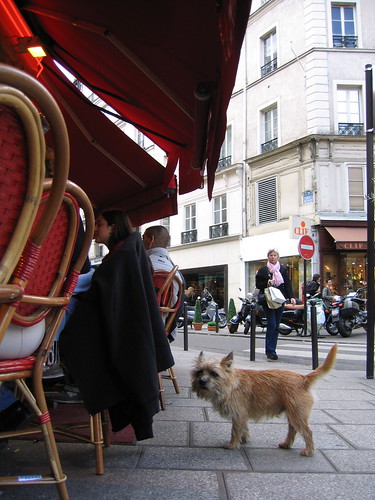Stretching your Dollar in Europe
 Greenback Blues
Greenback Blues T+L’s Andrea Bennett tells you how to stretch your dollar in Europe.
From May 2008
From May 2008
When it comes to saving money in Europe, the advice I most often hear is: go during “shoulder season,” discover alternate destinations, or take a cruise (and eat on the ship, even when it’s docked). But sometimes, only Paris in the springtime at the Four Seasons Hotel George V will do. To mitigate the pain of the current exchange rate without compromising your ultimate trip, follow my six-step plan. More money-saving ideas can also be found in “Strategies”, and in “Three Affordable European Itineraries”.
Avoid ATM fees
Cash machines are still the best way to get local currency—if you can get around the exorbitant fees. Lately, some banks have hiked their flat rate of $2 per withdrawal to $5, or added a conversion surcharge, or both. Check to see what your bank levies before leaving home—and before making a withdrawal (you can find a list of costs at Bankrate.com).
Cash machines are still the best way to get local currency—if you can get around the exorbitant fees. Lately, some banks have hiked their flat rate of $2 per withdrawal to $5, or added a conversion surcharge, or both. Check to see what your bank levies before leaving home—and before making a withdrawal (you can find a list of costs at Bankrate.com).
Find a Local Partner
Even if your bank has substantial fees for withdrawals, many institutions now work with partners abroad and allow customers to take out money at no charge. Bank of America imposes $5, plus 1 percent of the withdrawal amount, at unaffiliated overseas ATM’s, but nothing at those of partners like Barclays (United Kingdom), BNP Paribas (France), and Deutsche Bank (Germany). Some banks, such as Citibank, have their own branches in Europe.
Even if your bank has substantial fees for withdrawals, many institutions now work with partners abroad and allow customers to take out money at no charge. Bank of America imposes $5, plus 1 percent of the withdrawal amount, at unaffiliated overseas ATM’s, but nothing at those of partners like Barclays (United Kingdom), BNP Paribas (France), and Deutsche Bank (Germany). Some banks, such as Citibank, have their own branches in Europe.
Do fewer exchanges in larger increments
Travelex currency-exchange kiosks (located at most airports) provide a lower service fee for larger transactions—for a $100 exchange, the charge is 6 percent, while it’s about 1.5 percent for sums of more than $500. Some companies (Travelex and Marks & Spencer) have “buy-back” programs, where consumers can sell their leftover currency at a favorable rate, often waiving the service fees, so you won’t have to dump your leftover money on duty-free Toblerone bars (although you’ll often have to return to the place of the original transaction).
Travelex currency-exchange kiosks (located at most airports) provide a lower service fee for larger transactions—for a $100 exchange, the charge is 6 percent, while it’s about 1.5 percent for sums of more than $500. Some companies (Travelex and Marks & Spencer) have “buy-back” programs, where consumers can sell their leftover currency at a favorable rate, often waiving the service fees, so you won’t have to dump your leftover money on duty-free Toblerone bars (although you’ll often have to return to the place of the original transaction).
Make major purchases with a credit card
Using your plastic abroad often guarantees you the lowest exchange rate and protects you from unauthorized charges. But the fees (for currency conversions and foreign transactions) are often the same as those on the issuer’s debit card. Only a couple of cards don’t charge extra (check before you go). Or, consider opening an account in euros to escape transaction fees altogether. Lloyds TSB Offshore (lloydstsb-offshore.com) or HSBC Premier (hsbcpremier.com) are two options.
Using your plastic abroad often guarantees you the lowest exchange rate and protects you from unauthorized charges. But the fees (for currency conversions and foreign transactions) are often the same as those on the issuer’s debit card. Only a couple of cards don’t charge extra (check before you go). Or, consider opening an account in euros to escape transaction fees altogether. Lloyds TSB Offshore (lloydstsb-offshore.com) or HSBC Premier (hsbcpremier.com) are two options.
Minimize transportation expenses
It’s possible to cut costs on getting around. Autoeurope (autoeurope.com), for example, guarantees car-rental rates in dollars. Eurostar (eurostar.com) usually charges far less if you purchase your rail trip through its United States Web site. At press time, we found a three-day, London-to-Paris trip on the U.S. site for $424; the same trip from the U.K. site was $654.
It’s possible to cut costs on getting around. Autoeurope (autoeurope.com), for example, guarantees car-rental rates in dollars. Eurostar (eurostar.com) usually charges far less if you purchase your rail trip through its United States Web site. At press time, we found a three-day, London-to-Paris trip on the U.S. site for $424; the same trip from the U.K. site was $654.
Watch out for dynamic currency conversion
Often, a merchant will present a credit card bill for purchases abroad in dollars, rather than euros, as a “convenience” to the customer. But since he’s free to pick any exchange rate for the transaction, you could end up losing money. And travelers aren’t aware that they can turn down this “service.” It’s generally safer when you buy using the local currency.
Often, a merchant will present a credit card bill for purchases abroad in dollars, rather than euros, as a “convenience” to the customer. But since he’s free to pick any exchange rate for the transaction, you could end up losing money. And travelers aren’t aware that they can turn down this “service.” It’s generally safer when you buy using the local currency.
Comments
Look forward to your updates.